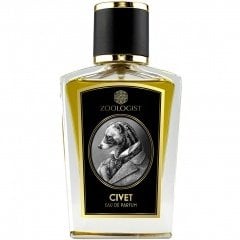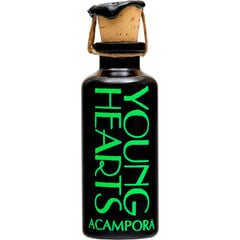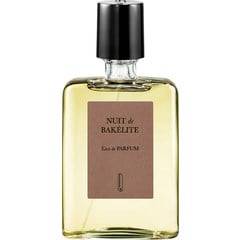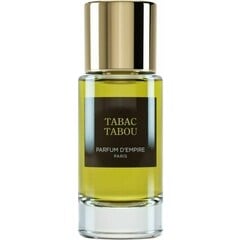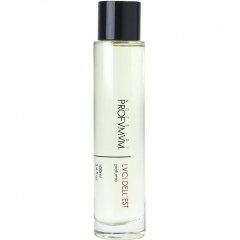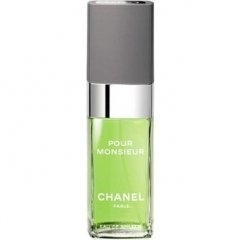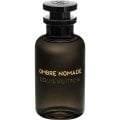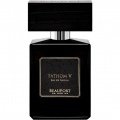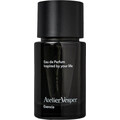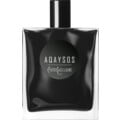
Anarlan
Reviews
Filter & sort
Translated
Show original
Kopi Luwak and an old acquaintance
As soon as a fragrance is named after an - admittedly nowadays synthetically produced - animal scent component, in the case of civet you can actually already be sure of several misunderstandings and the resulting typical reactions ("Eww!", "Uäähh!", "Bäh!"): Namely, that the scent would have something to do with cats and/or cat urine smell. The misunderstanding is partly based on the assumption that civets are real cats. But they are nocturnal mammals, which are found in several subspecies from Southern Europe over Africa to Asia and have very little to do with the cats we know. From a distance and in the dark they may look a bit like cats when creeping around, which is why they are also called "sneak cats".
That civet as a fragrance building block has come under suspicion to smell like cat pee, has its cause possibly in the fact that the substance was formerly obtained from the strongly greasy and malodorous secretion of the anal glands of civets, which has nothing to do with urine, and that, among other things, urinous scents can be perceived in civet-containing perfumes, which is, however, only indirectly related to the civet.
In fact, what is commonly perceived as a urinous odor is not due to the urine itself at all. Fresh urine is relatively odorless, which anyone can determine for themselves by a spirited sniff. Don't be shy! After all, we're among ourselves here and I won't tell anyone. Speaking of which: You know how doctors used to diagnose diabetes mellitus in patients? They would dip their finger in the patient's urine to taste the taste of the urine: sweet equals sugar equals diabetes. Here you go. And now come at me again with "Whoo, the smell here has a horrible pee-pee note, it's making me bloomy!".
How does the typical urine smell in the urine come about then? It is bacterial decomposition products, namely the sharp bitter ammonia, which produce the typical unpleasant pipi smell. Animal scents, and thus also urinous scents (I'm sorry, but one has to call a spade a spade) in perfume can nevertheless - in the right homeopathic dilution - make up the special charm of a scent and give it the necessary touch of sophistication. Without this pinch Untertenrum, neither Kouros, nor Jicky, as a modern representative immediately MAAI comes to mind, possibly ever reached their legendary reputation and quality.
However, these olfactory memories of the fact that we come from the animal world, and with which we apparently in our today's thoroughly disinfected, germ-poor, mask-armed time but somehow difficult to do, are often not to be attributed solely to the used animal ingredients such as civet, musk, amber, Hyraceum, Castoreum and the like. In addition to their own olfactory justification in fragrances, the aforementioned substances also have fixative or other fragrance components with stronger projecting functions. Rather, the odorous "touch of piss" (or other substances, but we don't want to exaggerate today) is also created by the clever combination with floral notes such as carnation, neroli, jasmine and white flowers with their responsible proportions of idol and scatol. Also citrus or herbaceous notes such as sage and lavender can create a urinous fragrance aspect, depending on the context.
I'm sincerely sorry. I didn't mean to ruin your freshly showered floral dreams. And "toilet lemon", you can see how close pee and citrus are sometimes literally together, is here in this forum yes now a fixed part of the Parfumo-speak.
The great Chypres of the past play with their often pronounced animalic notes virtuoso on this keyboard. And "Civet" continues this tradition with a touch of these "old vibes". To understand which story Victor Wong, creative head of Zoologist, together with his perfumer Shelley Waddington tells in Civet, you have to go back to the Indonesian sneaky cat for a moment.
Kopi Luwak is made in Indonesia, among other countries, and is one of the world's most expensive coffees. Originally a literal waste product of colonial coffee cultivation - the laboriously cultivated plantation coffee was reserved exclusively for the colonial powers and their export - the locals resorted to a different method to get their hands on the coveted hot beverage. They collected undigested coffee beans found in the excrement of creeping cats. In the animal's intestines, the coffee cherries are subjected to fermentation by enzymes, which alters the flavor characteristics and gives the coffee an earthy, syrupy, rich aroma with undertones of jungle and chocolate, which I would attest to, unless my memory of the cup of kopi luwak I was once served in Indonesia is deceiving.
"Civet" surprises at one moment with a caramel coffee note when you're not expecting it, but more on that later. Nevertheless, it would not occur to me to call the fragrance a gourmand, for this it lacks the necessary sweetness and the impression of having something edible in front of you. I also lack for the category "animal fragrance" the correspondingly strong aspects.
The fragrance opens with a fair amount of black pepper, a touch of green herbaceousness and citrus notes of tart bergamot, a squeeze of lemon and especially orange.
Close to the heart, things quickly turn unsweetly floral. Garden carnation and a creamy, slightly camphorous old acquaintance framed unkitschy tropically by frangipani and ylang ylang shine in the twilight of the jungle: A gorgeous mellow tuberose with vintage touches.
One suspects slowly, however, that here possibly also nimble predators with claw-armed velvety paws scurry shadow-like under the trees. The scent now develops a slightly brittle, wiry, roughened, slender texture due to the more prominent base ingredients. Labdanum and oakmoss emerge, along with a leathery and slightly resinous, balsamic, warm quality that I would attribute to musk and civet.
Late now it moves into the kin of floriental chypres in my view, but holds one last surprise: The coffee aroma of Kopi Luwak, which together with a touch of vanilla heliotrope has a softening effect and forms a wonderfully attractive unit with civet and tuberose in my view.
The combination of tuberose and coffee with chypre aspects is certainly daring, and could, and now comes for today the last flat joke in this direction, go full in the pants, which is not the case. The fragrance is completely suitable for everyday use and at the same time exceedingly durable, I can still perceive it days later on my jacket collar.
My thanks to Ergoproxy for the sample!
That civet as a fragrance building block has come under suspicion to smell like cat pee, has its cause possibly in the fact that the substance was formerly obtained from the strongly greasy and malodorous secretion of the anal glands of civets, which has nothing to do with urine, and that, among other things, urinous scents can be perceived in civet-containing perfumes, which is, however, only indirectly related to the civet.
In fact, what is commonly perceived as a urinous odor is not due to the urine itself at all. Fresh urine is relatively odorless, which anyone can determine for themselves by a spirited sniff. Don't be shy! After all, we're among ourselves here and I won't tell anyone. Speaking of which: You know how doctors used to diagnose diabetes mellitus in patients? They would dip their finger in the patient's urine to taste the taste of the urine: sweet equals sugar equals diabetes. Here you go. And now come at me again with "Whoo, the smell here has a horrible pee-pee note, it's making me bloomy!".
How does the typical urine smell in the urine come about then? It is bacterial decomposition products, namely the sharp bitter ammonia, which produce the typical unpleasant pipi smell. Animal scents, and thus also urinous scents (I'm sorry, but one has to call a spade a spade) in perfume can nevertheless - in the right homeopathic dilution - make up the special charm of a scent and give it the necessary touch of sophistication. Without this pinch Untertenrum, neither Kouros, nor Jicky, as a modern representative immediately MAAI comes to mind, possibly ever reached their legendary reputation and quality.
However, these olfactory memories of the fact that we come from the animal world, and with which we apparently in our today's thoroughly disinfected, germ-poor, mask-armed time but somehow difficult to do, are often not to be attributed solely to the used animal ingredients such as civet, musk, amber, Hyraceum, Castoreum and the like. In addition to their own olfactory justification in fragrances, the aforementioned substances also have fixative or other fragrance components with stronger projecting functions. Rather, the odorous "touch of piss" (or other substances, but we don't want to exaggerate today) is also created by the clever combination with floral notes such as carnation, neroli, jasmine and white flowers with their responsible proportions of idol and scatol. Also citrus or herbaceous notes such as sage and lavender can create a urinous fragrance aspect, depending on the context.
I'm sincerely sorry. I didn't mean to ruin your freshly showered floral dreams. And "toilet lemon", you can see how close pee and citrus are sometimes literally together, is here in this forum yes now a fixed part of the Parfumo-speak.
The great Chypres of the past play with their often pronounced animalic notes virtuoso on this keyboard. And "Civet" continues this tradition with a touch of these "old vibes". To understand which story Victor Wong, creative head of Zoologist, together with his perfumer Shelley Waddington tells in Civet, you have to go back to the Indonesian sneaky cat for a moment.
Kopi Luwak is made in Indonesia, among other countries, and is one of the world's most expensive coffees. Originally a literal waste product of colonial coffee cultivation - the laboriously cultivated plantation coffee was reserved exclusively for the colonial powers and their export - the locals resorted to a different method to get their hands on the coveted hot beverage. They collected undigested coffee beans found in the excrement of creeping cats. In the animal's intestines, the coffee cherries are subjected to fermentation by enzymes, which alters the flavor characteristics and gives the coffee an earthy, syrupy, rich aroma with undertones of jungle and chocolate, which I would attest to, unless my memory of the cup of kopi luwak I was once served in Indonesia is deceiving.
"Civet" surprises at one moment with a caramel coffee note when you're not expecting it, but more on that later. Nevertheless, it would not occur to me to call the fragrance a gourmand, for this it lacks the necessary sweetness and the impression of having something edible in front of you. I also lack for the category "animal fragrance" the correspondingly strong aspects.
The fragrance opens with a fair amount of black pepper, a touch of green herbaceousness and citrus notes of tart bergamot, a squeeze of lemon and especially orange.
Close to the heart, things quickly turn unsweetly floral. Garden carnation and a creamy, slightly camphorous old acquaintance framed unkitschy tropically by frangipani and ylang ylang shine in the twilight of the jungle: A gorgeous mellow tuberose with vintage touches.
One suspects slowly, however, that here possibly also nimble predators with claw-armed velvety paws scurry shadow-like under the trees. The scent now develops a slightly brittle, wiry, roughened, slender texture due to the more prominent base ingredients. Labdanum and oakmoss emerge, along with a leathery and slightly resinous, balsamic, warm quality that I would attribute to musk and civet.
Late now it moves into the kin of floriental chypres in my view, but holds one last surprise: The coffee aroma of Kopi Luwak, which together with a touch of vanilla heliotrope has a softening effect and forms a wonderfully attractive unit with civet and tuberose in my view.
The combination of tuberose and coffee with chypre aspects is certainly daring, and could, and now comes for today the last flat joke in this direction, go full in the pants, which is not the case. The fragrance is completely suitable for everyday use and at the same time exceedingly durable, I can still perceive it days later on my jacket collar.
My thanks to Ergoproxy for the sample!
23 Comments
Translated
Show original
Forest Disco
It is initially strange that the somewhat aging, traditional Italian company Bruno Acampora, founded in the mid-1970s, has taken the risk of launching a seven-scented series called "Acampora 54", which evokes the glamorous pre-Aids disco era of the excessive and legendary New York nightclub "Studio54". As soon as one knows that Bruno Acampora himself was a regular guest on the dance floor of Studio54 and somehow belonged to the sprawling haze of Andy Warhol, the connection becomes a little more obvious. According to this, fragrance number one also bears the name "Bruno" as a homage to its founder.
In the visuals that belong to the series (which includes a video entitled "Acampora 54" on YouTube, which I think is lukewarm rather than hot), Disco Inferno is celebrated in a rather orderly, tame and easily digestible way in chic images with pretty young people, including the inevitable disco ball.
To commission a Miguel Matos, self-taught perfumer and Fragrantica reviewer with a penchant for experimentation (see the "Scents of Fail"), to create the fragrances was probably the more daring step. This choice has turned out to be a possibly right one, at the latest after his "Young Hearts", part of the series, was chosen as the winner in the Independent category of the annual Los Angeles "Art and Olfaction Awards" in the middle of the month.
Young Hearts it is.
At the heart of the fragrance are the resins and balms of deep green boreal pine forests with their majestic radiance and tranquility. This has nothing to do with excessive nightclubbing, but it is at least as beautiful. The fragrance returns to this strong, calming mood over and over again during its many hours of fragrance development. The concentration of scent in the Extrait, which I'm testing, is sheer madness. A few molecules, dabbed onto the arm with the plastic stick from the specimen, and the scent can be perceived throughout the room. My family, contrary to other habits, commented loudly on all the scents (including "Robin" and "Relight my fire", and a small note below), which is unusual enough in itself, since my scent preferences don't usually bother anyone at home, so there are hardly any comments on scents. I have to say that I use scents sparingly, as I find a second shell of scent around me rather unattractive for outsiders. This time it was different, the booth smelled like a Scandinavian witch's forest. And just to be clear: Young Hearts was the clear favourite of all.
Young Hearts have a density and quality and urgency of aromas that I have so far only known from Annette Neuffer and some perfumes by Francesca Bianchi. The opening is a veritable green explosion of galbanum, bergamot and coniferous forest aromas, with bergamot ensuring that the overall impression remains fresh without drifting into galbanum-typical oily-bitter realms. The distinct presence of galbanum and, next to it, oakmoss, which forms the backbone of the fragrance along with the coniferous forest balsams, creates affinities with galbanum-infused chypre like Scherrer and Bandit, but looks much more modern compared to these old giants (both of whom I like very much).
In the course of time, other aspects become clearly visible: leathery, cool saffron, which creates a dusty, spicy grounding and darkening, and a deep dark red rose, over which other floral northern lights wander. Dark patchouli (this time without chocolate/hippie or flowerpot colouring) remains discreetly in the background, until finally, after more than 6 hours in the fragrance, the oak-mossy base comes up with what I think are clearly animalistic, but very attractive aspects through musk. Musk has a warm, sexy, somewhat grubby quality, which suits the drydown very well.
The fragrance combines warm and cool aspects, boreal freshness that plays with intimacy and skin warmth, as if you were snuggling up in a warm sleeping bag under the stars somewhere in Scandinavia's forests. And that is incredibly attractive and cosy and peaceful and beautiful.
Meanwhile, the others are welcome to wander around the clubs.
PS: I have only tested three of the 54s, and during the "Relight my fire" the dancing leg itched a lot. A retro floral-aldehyde firecracker, as if Grace Jones had just pulled up in a taxi. Gimme, gimme, gimme!
In the visuals that belong to the series (which includes a video entitled "Acampora 54" on YouTube, which I think is lukewarm rather than hot), Disco Inferno is celebrated in a rather orderly, tame and easily digestible way in chic images with pretty young people, including the inevitable disco ball.
To commission a Miguel Matos, self-taught perfumer and Fragrantica reviewer with a penchant for experimentation (see the "Scents of Fail"), to create the fragrances was probably the more daring step. This choice has turned out to be a possibly right one, at the latest after his "Young Hearts", part of the series, was chosen as the winner in the Independent category of the annual Los Angeles "Art and Olfaction Awards" in the middle of the month.
Young Hearts it is.
At the heart of the fragrance are the resins and balms of deep green boreal pine forests with their majestic radiance and tranquility. This has nothing to do with excessive nightclubbing, but it is at least as beautiful. The fragrance returns to this strong, calming mood over and over again during its many hours of fragrance development. The concentration of scent in the Extrait, which I'm testing, is sheer madness. A few molecules, dabbed onto the arm with the plastic stick from the specimen, and the scent can be perceived throughout the room. My family, contrary to other habits, commented loudly on all the scents (including "Robin" and "Relight my fire", and a small note below), which is unusual enough in itself, since my scent preferences don't usually bother anyone at home, so there are hardly any comments on scents. I have to say that I use scents sparingly, as I find a second shell of scent around me rather unattractive for outsiders. This time it was different, the booth smelled like a Scandinavian witch's forest. And just to be clear: Young Hearts was the clear favourite of all.
Young Hearts have a density and quality and urgency of aromas that I have so far only known from Annette Neuffer and some perfumes by Francesca Bianchi. The opening is a veritable green explosion of galbanum, bergamot and coniferous forest aromas, with bergamot ensuring that the overall impression remains fresh without drifting into galbanum-typical oily-bitter realms. The distinct presence of galbanum and, next to it, oakmoss, which forms the backbone of the fragrance along with the coniferous forest balsams, creates affinities with galbanum-infused chypre like Scherrer and Bandit, but looks much more modern compared to these old giants (both of whom I like very much).
In the course of time, other aspects become clearly visible: leathery, cool saffron, which creates a dusty, spicy grounding and darkening, and a deep dark red rose, over which other floral northern lights wander. Dark patchouli (this time without chocolate/hippie or flowerpot colouring) remains discreetly in the background, until finally, after more than 6 hours in the fragrance, the oak-mossy base comes up with what I think are clearly animalistic, but very attractive aspects through musk. Musk has a warm, sexy, somewhat grubby quality, which suits the drydown very well.
The fragrance combines warm and cool aspects, boreal freshness that plays with intimacy and skin warmth, as if you were snuggling up in a warm sleeping bag under the stars somewhere in Scandinavia's forests. And that is incredibly attractive and cosy and peaceful and beautiful.
Meanwhile, the others are welcome to wander around the clubs.
PS: I have only tested three of the 54s, and during the "Relight my fire" the dancing leg itched a lot. A retro floral-aldehyde firecracker, as if Grace Jones had just pulled up in a taxi. Gimme, gimme, gimme!
15 Comments
Translated
Show original
Who are you, Sally Bowles?
My first pictures at Nuit were those of a nightly Art Deco salon in warm, subdued light, surfaces of dark lacquer and shiny black plastic. Is there art deco furniture made of bakelite? There are vases standing around, they look like this, bouquets in them, lush, a numbing, dusty flowery scent is in the air. Are they all real flowers between the polished chrome? On the walls hang mirrors that have been overhauled by age, the floor is made of old, but light, fragrant parquet. I'm in a quiet conversation with a creature that seems to come from a bygone era, yet seems completely modern. Its androgynous outlines are reflected by the mirrored surfaces. The short, dark hairs cling to the slender, pale face and emphasize its boyishness. A Sally Bowles that seems to come from the future, or did she fall through a wormhole from the artist's dressing room of a Berlin cabaret of the twenties? One chats, flirts, the conversation an indeterminate game with ideas, possibilities, reflections. Is that attraction? I can't get rid of the feeling of being part of a production. What is real here, what is only scenery? A quiet uneasiness is spreading. Something suddenly becomes too much for me, paralyses me. This dusty density. I want to think clearly, suck in the cold air that smells of rain.
I have to get out of here
Naomi Goodsir is an artist who prefers to show herself in newly interpreted, elaborately crafted set pieces of classic clothing - especially traditional men's and uniform fashion - and has made this arsenal part of her work. Oversized collars, ties, costume jackets, hunting hats, feathered headdresses, braces, leather, the archaic, vintage and futuristic, the dark, fetish, all of these populate her creative, expressive cosmos, in which her hat-making and the production of sophisticated handcrafted accessories form the heart of her work. Nuit is one of her first fragrances created under her own label. Before that, she worked as a perfume-inspired artist (she is not a perfumer by nature) for Annick Goutal and was responsible, together with Isabelle Doyen, for example, for "Ambre Fétiche" (which I liked very much). When you look at her oeuvre, you expect her to devote herself to the subject of tuberose in her own very special way. A play of archaic, artificial and natural elements, and this in her own expressive handwriting - and one is not disappointed.
Whether this is portable or suitable as a utility product is of course a different matter, but more on this later...
For tuberoses you need strong nerves in many respects.
They are diva-like bulbous plants which, in our latitudes, adorn themselves only one summer long with their elegant, waxy white flowers floating on slender stems and their incomparably intense fragrance. The tuberose is an enchanting beauty, which exerts itself sensually and confidently, only to remain snap-frozen under a tuft of green leaves the following year, just as if it were unable - just like the weather-sensitive, nervous bitch - to step in front of the curtain once again, just one last time, and accept the never-ending applause of its admirers
Tuberoses (like all divas) have their fans and those who turn up their noses. Whoever sticks his nose into Robert Piguet's "Fracas" will, in relation to the typical tuberose scent, have quickly made his decision to belong to one camp or the other. I am honestly divided here. "Fascinatingly tiring" is probably the right word to use if someone were to ask me for my briefest description of my feelings about this particular genus of white-flowered plants. Heavy, sensual, very feminine, nocturnal, narcotic, robbing the senses - that's more or less how I would describe myself.
Tuberose takes a central position in Nuit, but is well flanked by other fragrance components, and Naomi Goodsir gives it an interpretation that exorcises the ultra-feminine, dominant femme fatale. Instead, she exposes her androgyny and a play on ambivalence. At the beginning there are almost rough, grassy, green-nutty, cool aspects reminiscent of fresh, tart plant juice (Angelika; the green eye shadow of Sally Bowles), balsamic-creamy (Galbanum; her warm physicality), woody and earthy (Styrax; we are in an old building), plus a dusty, dry density (this place should actually be aired ... Maybe someone will tell me which tricks Mrs. Goodsir uses to create the dustiness in some of her scents, also in "Ambre"). All of this somehow possibly gives an impression of plastic. Or of rather green tuberoses in night-black plastic vases. I do not know. I can't really understand this plastic association and, to prove me wrong, I smelled various black caps on bottles, hoping I would find out what bakelite smells like - no way.
But it still fits: black, shiny surfaces, reflecting, something old, yet modern, almost futuristic, night. This impression stays with me, while the Nuit tuberose unfolds its various fascinating aspects and casts a strange spell on you. My family, however, has a unanimous opinion, and so I could dose as homoeopathically as I wanted (you should always do that with the fragrance anyway, the performance is otherwise literally suffocating):
Let's get out of here!
Conclusion: A handcrafted, undoubtedly high-quality, incredibly densely woven fragrance with a narcotic performance, which should only be used in micro-spray bursts (and even these effortlessly fill entire rooms). Minimalistically dosed, however, it shows its many facets and its ambivalent appeal.
PS: I still can't really decide what rating I give him in the end. Starting at 8.5, corrected down to 7.5, I'm now tending back up again.
Who are you, Sally Bowles?
I have to get out of here
Naomi Goodsir is an artist who prefers to show herself in newly interpreted, elaborately crafted set pieces of classic clothing - especially traditional men's and uniform fashion - and has made this arsenal part of her work. Oversized collars, ties, costume jackets, hunting hats, feathered headdresses, braces, leather, the archaic, vintage and futuristic, the dark, fetish, all of these populate her creative, expressive cosmos, in which her hat-making and the production of sophisticated handcrafted accessories form the heart of her work. Nuit is one of her first fragrances created under her own label. Before that, she worked as a perfume-inspired artist (she is not a perfumer by nature) for Annick Goutal and was responsible, together with Isabelle Doyen, for example, for "Ambre Fétiche" (which I liked very much). When you look at her oeuvre, you expect her to devote herself to the subject of tuberose in her own very special way. A play of archaic, artificial and natural elements, and this in her own expressive handwriting - and one is not disappointed.
Whether this is portable or suitable as a utility product is of course a different matter, but more on this later...
For tuberoses you need strong nerves in many respects.
They are diva-like bulbous plants which, in our latitudes, adorn themselves only one summer long with their elegant, waxy white flowers floating on slender stems and their incomparably intense fragrance. The tuberose is an enchanting beauty, which exerts itself sensually and confidently, only to remain snap-frozen under a tuft of green leaves the following year, just as if it were unable - just like the weather-sensitive, nervous bitch - to step in front of the curtain once again, just one last time, and accept the never-ending applause of its admirers
Tuberoses (like all divas) have their fans and those who turn up their noses. Whoever sticks his nose into Robert Piguet's "Fracas" will, in relation to the typical tuberose scent, have quickly made his decision to belong to one camp or the other. I am honestly divided here. "Fascinatingly tiring" is probably the right word to use if someone were to ask me for my briefest description of my feelings about this particular genus of white-flowered plants. Heavy, sensual, very feminine, nocturnal, narcotic, robbing the senses - that's more or less how I would describe myself.
Tuberose takes a central position in Nuit, but is well flanked by other fragrance components, and Naomi Goodsir gives it an interpretation that exorcises the ultra-feminine, dominant femme fatale. Instead, she exposes her androgyny and a play on ambivalence. At the beginning there are almost rough, grassy, green-nutty, cool aspects reminiscent of fresh, tart plant juice (Angelika; the green eye shadow of Sally Bowles), balsamic-creamy (Galbanum; her warm physicality), woody and earthy (Styrax; we are in an old building), plus a dusty, dry density (this place should actually be aired ... Maybe someone will tell me which tricks Mrs. Goodsir uses to create the dustiness in some of her scents, also in "Ambre"). All of this somehow possibly gives an impression of plastic. Or of rather green tuberoses in night-black plastic vases. I do not know. I can't really understand this plastic association and, to prove me wrong, I smelled various black caps on bottles, hoping I would find out what bakelite smells like - no way.
But it still fits: black, shiny surfaces, reflecting, something old, yet modern, almost futuristic, night. This impression stays with me, while the Nuit tuberose unfolds its various fascinating aspects and casts a strange spell on you. My family, however, has a unanimous opinion, and so I could dose as homoeopathically as I wanted (you should always do that with the fragrance anyway, the performance is otherwise literally suffocating):
Let's get out of here!
Conclusion: A handcrafted, undoubtedly high-quality, incredibly densely woven fragrance with a narcotic performance, which should only be used in micro-spray bursts (and even these effortlessly fill entire rooms). Minimalistically dosed, however, it shows its many facets and its ambivalent appeal.
PS: I still can't really decide what rating I give him in the end. Starting at 8.5, corrected down to 7.5, I'm now tending back up again.
Who are you, Sally Bowles?
16 Comments
Translated
Show original
Spring in the horse stables
"For God's sake!"
With verve and under dramatic invocation of the saints and the Virgin Mary, the pot with the beautifully flowering "Bridal Crown", a small, white, stuffed narcissus variety, which I recently received as a small thank you, is transported one room further from the dining room by my (undoubtedly) better half.
Although I like the heavy, somehow greasy, somewhat rough aroma of the white flowers, the olfactory proximity to horse stables cannot be denied. I admit that in the dining room, the scent of the blossoms unfolds an - let's put it diplomatically - inappropriate effect, and I'm also not quite sure whether a bride would be suitably scented with a wreath of daffodil blossoms. It would probably depend on the tolerance of the subject to be married with regard to the scent of narcissus. So I admit that the pot may stink one room further on from now on.
In spring, which is unfortunately still very much in the background, you can see them almost everywhere, and it is usually not the large-flowered, unfilled, classic yellow daffodils (which I find a little boring) that give off the typical narcissus scent, but the smaller, pale yellow or white flowering daffodils, at first glance somewhat more inconspicuous than the classic representatives, but completely unmistakable as far as their scent is concerned, and which bear such beautiful species names as "poet daffodils".
The plant has obviously attracted a certain amount of literary attention since ancient times, and it is probably also due to its scent. Legend has it that it was the beautiful young man Narkissos who spurned the nymph Echo's violent courtship and was punished by the gods for falling tragically in love with his own reflection. The unfulfilled love for his own face, which he saw reflected in the surface of a body of water, literally starved the boy. On his grave, however, a charming flower with a narcotic (yes!) fragrance soon blossomed, lowering the little flower head: the first narcissus in the world was born, and its offspring has since split mankind into such specimens as myself and others (see above).
The fact that the fragrance doesn't come across as spring-like, white-flowery and delicate at all, but would be better suited to dry, hot, sun-drenched pastures, where the hay bales and horse droppings dry in the midday heat, may also have crossed the mind of Monsieur Corticchiato, the mastermind of Parfum d'Empire, when he created Tabac Tabou. Parfum d'Empire has a small but loyal following on Parfumo, and I can count myself among them without reservation. Corticchio's fragrances are not always easy, but strong in creating images. They often take you by the second or third olfactory nose, but they are mostly French perfume history and elegantly distinguished, yet at the same time they are stubborn enough to belong in a niche.
With Tabac Tabou, the narcissus with its powerful fragrance aspects is at the centre. Tobacco is, if at all, a transparent accessory, and at the heart of the fragrance it rather underlines the rough, heated fullness with which the narcissus is at the centre of the fragrance. I imagine that I perceive both the juicy aspects of the tobacco leaf and the scratchy roughness of tobacco smoke, but both aspects are more likely to envelop the flowering centre of the fragrance. Anyone expecting a classic tobacco scent is therefore likely to be disappointed. Nevertheless, Tabac Tabou is not a narcissus soliflor, as some other scent aspects are woven in to create the aforementioned image of a hot, dry savannah. The beginning is herbaceous and green, more to do with the drying plant sap and stems of the narcissus than with its floral ornamentation, with the sunny-warm voice of honey appearing right at the beginning. The golden, tart honey note remains with the fragrance until the end and is gently fired by the Italian strawflower (immortelle), but weakens slowly as the show progresses to make way for the real stars of the show: Daffodil blossoms in their physical, greasy, almost animalistic fullness reminiscent of horse stables, and sun-kissed, herbaceous, hay. The hay note is just when the honey note weakens after some time, most clearly perceptible and underlines the dry, brittle, sun-drenched, warm heart of the fragrance. The pyramid lists musk, which I - thinking of the slowly increasing scratchy dustiness of the fragrance - want to believe.
When classifying the scent, the combination green/hay would probably be most appropriate in the fougère direction, but in its dry-brittle-spicy nature it also reminded me of old Oriental chypre and I could imagine that perhaps a few scent memories of old treasures of this direction in Mr. Corticchiato's work had their influence in the creation of the scent.
Tabac Tabou is a demanding, dry, roughened, completely unspringing narcissistic scent, which I like to and literally rub against again and again, but which makes it rather difficult to wear due to its special characteristics and with regard to my sensitive environment. In hot, dusty summers it is probably great.
For those who are looking for a seasonal white flowering spring mood, "Bridal Crown" is a filled flowering narcissus variety ... let's leave it at that.
With verve and under dramatic invocation of the saints and the Virgin Mary, the pot with the beautifully flowering "Bridal Crown", a small, white, stuffed narcissus variety, which I recently received as a small thank you, is transported one room further from the dining room by my (undoubtedly) better half.
Although I like the heavy, somehow greasy, somewhat rough aroma of the white flowers, the olfactory proximity to horse stables cannot be denied. I admit that in the dining room, the scent of the blossoms unfolds an - let's put it diplomatically - inappropriate effect, and I'm also not quite sure whether a bride would be suitably scented with a wreath of daffodil blossoms. It would probably depend on the tolerance of the subject to be married with regard to the scent of narcissus. So I admit that the pot may stink one room further on from now on.
In spring, which is unfortunately still very much in the background, you can see them almost everywhere, and it is usually not the large-flowered, unfilled, classic yellow daffodils (which I find a little boring) that give off the typical narcissus scent, but the smaller, pale yellow or white flowering daffodils, at first glance somewhat more inconspicuous than the classic representatives, but completely unmistakable as far as their scent is concerned, and which bear such beautiful species names as "poet daffodils".
The plant has obviously attracted a certain amount of literary attention since ancient times, and it is probably also due to its scent. Legend has it that it was the beautiful young man Narkissos who spurned the nymph Echo's violent courtship and was punished by the gods for falling tragically in love with his own reflection. The unfulfilled love for his own face, which he saw reflected in the surface of a body of water, literally starved the boy. On his grave, however, a charming flower with a narcotic (yes!) fragrance soon blossomed, lowering the little flower head: the first narcissus in the world was born, and its offspring has since split mankind into such specimens as myself and others (see above).
The fact that the fragrance doesn't come across as spring-like, white-flowery and delicate at all, but would be better suited to dry, hot, sun-drenched pastures, where the hay bales and horse droppings dry in the midday heat, may also have crossed the mind of Monsieur Corticchiato, the mastermind of Parfum d'Empire, when he created Tabac Tabou. Parfum d'Empire has a small but loyal following on Parfumo, and I can count myself among them without reservation. Corticchio's fragrances are not always easy, but strong in creating images. They often take you by the second or third olfactory nose, but they are mostly French perfume history and elegantly distinguished, yet at the same time they are stubborn enough to belong in a niche.
With Tabac Tabou, the narcissus with its powerful fragrance aspects is at the centre. Tobacco is, if at all, a transparent accessory, and at the heart of the fragrance it rather underlines the rough, heated fullness with which the narcissus is at the centre of the fragrance. I imagine that I perceive both the juicy aspects of the tobacco leaf and the scratchy roughness of tobacco smoke, but both aspects are more likely to envelop the flowering centre of the fragrance. Anyone expecting a classic tobacco scent is therefore likely to be disappointed. Nevertheless, Tabac Tabou is not a narcissus soliflor, as some other scent aspects are woven in to create the aforementioned image of a hot, dry savannah. The beginning is herbaceous and green, more to do with the drying plant sap and stems of the narcissus than with its floral ornamentation, with the sunny-warm voice of honey appearing right at the beginning. The golden, tart honey note remains with the fragrance until the end and is gently fired by the Italian strawflower (immortelle), but weakens slowly as the show progresses to make way for the real stars of the show: Daffodil blossoms in their physical, greasy, almost animalistic fullness reminiscent of horse stables, and sun-kissed, herbaceous, hay. The hay note is just when the honey note weakens after some time, most clearly perceptible and underlines the dry, brittle, sun-drenched, warm heart of the fragrance. The pyramid lists musk, which I - thinking of the slowly increasing scratchy dustiness of the fragrance - want to believe.
When classifying the scent, the combination green/hay would probably be most appropriate in the fougère direction, but in its dry-brittle-spicy nature it also reminded me of old Oriental chypre and I could imagine that perhaps a few scent memories of old treasures of this direction in Mr. Corticchiato's work had their influence in the creation of the scent.
Tabac Tabou is a demanding, dry, roughened, completely unspringing narcissistic scent, which I like to and literally rub against again and again, but which makes it rather difficult to wear due to its special characteristics and with regard to my sensitive environment. In hot, dusty summers it is probably great.
For those who are looking for a seasonal white flowering spring mood, "Bridal Crown" is a filled flowering narcissus variety ... let's leave it at that.
11 Comments
Translated
Show original
Violet, Roman.
At the end of September I was a professional participant at a symposium in Rome. During the day I sat in an overclimatized and permanently darkened lecture hall, from which I was spat out late in the afternoon with the other congress participants on the still midsummerly hot pavement between St. Peter's Basilica and Engelsburg. On one of those afternoons, instead of fleeing from the evening program into the quiet and seclusion of my hotel room, I drifted with the stream of tourists across the Ponte Sant' Angelo and the Tiber towards the city centre, past street vendors trying to do business with fake Gucci bags and costume jewellery.
I am resistant to souvenir buying impulses, unless - and relatively few people outside this forum understand this - it's about perfume. So on my sightseeing tour I had decided to visit the Pro Fvmvm Roma shop near the Piazza del Popolo, where I was tired of the late summer heat and the crowds of people and found a puristic refuge of well-ordered peace.
Lots of warm stone and wood, indirect light, silence, an atmosphere created for extensive fragrance testing. What was new to me - the saleswoman informed me about this in a charming and wordy way - was the existence of the new perfume line "Note Di Profvmvm" of the Durante family, the founder of the fragrance house, which has been in existence since 2016. I love and own from the classic Pro Fvmvm line "Victrix", a bold, peppery green, laurel-wreathed, statuesque scent, which lives up to its name, translated "winner", and which I like to wear - even if not open - in spring.
The new fragrance line wants to tell stories, each illustrated with watercolours, chalk drawings and graphics, which can be obtained in a small portfolio by buying a fragrance from this line. The visual language is borrowed from Italian Futurism: it is about technology, speed, dynamics, the logo of the brand is reminiscent of a constructivist typography, the references to the spirit of modernism in art are relatively unmistakable. In the scents, however, I have not found this abandoned utopia of the beginning of the 20th century, at most in the freshly blown vetiver-blaster "Vet-G16", which I could well imagine in a professional pilot of futurism, ready to tear down the old world and found a new one on the ruins ....
I particularly liked this series "Lvci dell'Est". The fragrance starts with a fresh, green, powdery, sour violet note, which forms an unusual sound with cardamom. Cardamom here has the second voice, contributes woody spice without dominating and becoming too peppery, shades the bright floral and powdery spots of violet and embeds them in the fragrance. Violet is not one of my favourite floral notes per se. As soon as the small violet flowers push themselves into the foreground in a fragrance, I wave thankfully away. But here they are set in scene harmoniously and appropriately by spicy, woody notes, without becoming dominant, so that I was fascinated by this balance from the beginning.
Within the first few minutes you can already perceive the woody central structure and the base of the fragrance: shimmering sunny, radiant cedar wood and the almondlike warmth of sandalwood. After about an hour, the fragrance has reached an earthy, dry, woody spice, the violet is still noticeable in a wonderfully delicate balance, which actually lasts for a few hours. The fragrance house delivers to the "Lvci dell'Est" the image of a racing motorcycle, which I find inappropriate, rather the fragrance radiates a great harmony, introversion and silence. I could swear that Patchouli is involved in the base. Patchouli of the most beautiful, papery, parchment variety, light, yet earthy. Light years away from old men's hippie patch, rotten flowerpot greediness or steel mafia needle stripes that Patchouli likes to spoil for me.
Alone, the pyramid doesn't give away Patchouli. Smooth nil return. Even if Parfumo Patchouli is listed here and some commentators or statement authors refer to Patchouli, there is nothing to be found in the manufacturer's specifications. I now believe that no patchouli was actually used, even if a similar impression is created, but that the notes that flow together in the base convey something patchouli-like. The violet that can be seen almost to the end is probably partly to blame for this. Fascinating. I told you. And that I didn't want to start my return journey the next day without this beautiful scent, I mention that here only for the sake of form.
I am resistant to souvenir buying impulses, unless - and relatively few people outside this forum understand this - it's about perfume. So on my sightseeing tour I had decided to visit the Pro Fvmvm Roma shop near the Piazza del Popolo, where I was tired of the late summer heat and the crowds of people and found a puristic refuge of well-ordered peace.
Lots of warm stone and wood, indirect light, silence, an atmosphere created for extensive fragrance testing. What was new to me - the saleswoman informed me about this in a charming and wordy way - was the existence of the new perfume line "Note Di Profvmvm" of the Durante family, the founder of the fragrance house, which has been in existence since 2016. I love and own from the classic Pro Fvmvm line "Victrix", a bold, peppery green, laurel-wreathed, statuesque scent, which lives up to its name, translated "winner", and which I like to wear - even if not open - in spring.
The new fragrance line wants to tell stories, each illustrated with watercolours, chalk drawings and graphics, which can be obtained in a small portfolio by buying a fragrance from this line. The visual language is borrowed from Italian Futurism: it is about technology, speed, dynamics, the logo of the brand is reminiscent of a constructivist typography, the references to the spirit of modernism in art are relatively unmistakable. In the scents, however, I have not found this abandoned utopia of the beginning of the 20th century, at most in the freshly blown vetiver-blaster "Vet-G16", which I could well imagine in a professional pilot of futurism, ready to tear down the old world and found a new one on the ruins ....
I particularly liked this series "Lvci dell'Est". The fragrance starts with a fresh, green, powdery, sour violet note, which forms an unusual sound with cardamom. Cardamom here has the second voice, contributes woody spice without dominating and becoming too peppery, shades the bright floral and powdery spots of violet and embeds them in the fragrance. Violet is not one of my favourite floral notes per se. As soon as the small violet flowers push themselves into the foreground in a fragrance, I wave thankfully away. But here they are set in scene harmoniously and appropriately by spicy, woody notes, without becoming dominant, so that I was fascinated by this balance from the beginning.
Within the first few minutes you can already perceive the woody central structure and the base of the fragrance: shimmering sunny, radiant cedar wood and the almondlike warmth of sandalwood. After about an hour, the fragrance has reached an earthy, dry, woody spice, the violet is still noticeable in a wonderfully delicate balance, which actually lasts for a few hours. The fragrance house delivers to the "Lvci dell'Est" the image of a racing motorcycle, which I find inappropriate, rather the fragrance radiates a great harmony, introversion and silence. I could swear that Patchouli is involved in the base. Patchouli of the most beautiful, papery, parchment variety, light, yet earthy. Light years away from old men's hippie patch, rotten flowerpot greediness or steel mafia needle stripes that Patchouli likes to spoil for me.
Alone, the pyramid doesn't give away Patchouli. Smooth nil return. Even if Parfumo Patchouli is listed here and some commentators or statement authors refer to Patchouli, there is nothing to be found in the manufacturer's specifications. I now believe that no patchouli was actually used, even if a similar impression is created, but that the notes that flow together in the base convey something patchouli-like. The violet that can be seen almost to the end is probably partly to blame for this. Fascinating. I told you. And that I didn't want to start my return journey the next day without this beautiful scent, I mention that here only for the sake of form.
13 Comments

 Anarlan
Anarlan